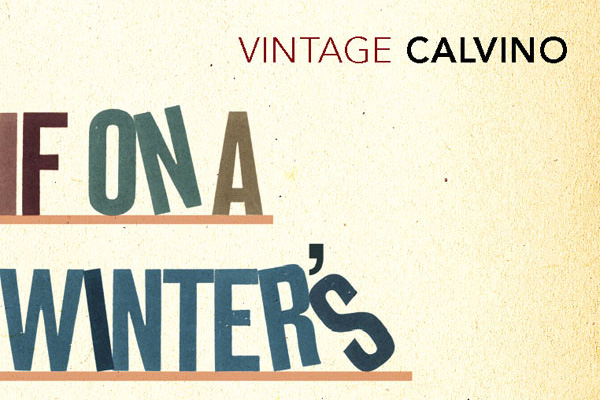“You are about to begin reading Italo Calvino’s latest novel. Relax. Concentrate … Let the world around you fade.”
So begins Italo Calvino’s masterful, polyphonic novel If on a winter’s night a traveller. Published in 1979, self-referential and perfectly postmodern, this book is an examination of what it means to be a reader as well as what it means to write. Forget the complexities of a play within a play; this is a novel inside a novel inside a novel, ad infinitum.
You have already begun reading my book review of If on a winter’s night a traveller. Take a deep breath. Allow your field of vision to narrow until it contains only this page and I will summarise the book as best I can. The over-arching narrative follows a reader trying to read Italo Calvino’s latest novel If on a winter’s night a traveller. At first, the protagonist is You. Written in second person, like a very literary instruction manual, the book follows You, the reader, as you endeavour to read the book. However, this “You” gradually merges with the identity of a specific reader, a rather unassuming young man who is constantly thwarted in his attempts to read the book he wants to read. He spends his time doggedly tracking the threads of the narratives he is encountering, as well as trying to begin a romance with an attractive female reader, Ludmilla. Every odd-numbered chapter is a description of how you – and he – are attempting to follow the thread of the original novel and every even-numbered chapter is the opening chapter from whichever new book the reader ends up reading. This means that the book flip-flops between a) the opening chapters of 10 vastly different novels and b) the labyrinthine quest of a reader who unwillingly encounters the opening pages of 10 truncated novels. As you and the reader continue through the book together, you discover a vast, tangled conspiracy involving forgotten languages, flighty translators, incompetent publishers and an elaborate, absurdist government censorship plot.
Admittedly this sounds as if it could make for frustrating reading, but If on a winter’s night a traveler is eminently readable. Its complications are playful rather than difficult, amusing rather than irritating. Most of all I was struck by how each opening chapter of a new novel completely absorbed me. The reader’s – and, implicitly, my – quest to work out what had caused the fracturing of the narratives faded and I launched eagerly into each even-numbered chapter with the joyful idiocy of a dog rushing after a stick, only to be brought up short 10 pages in.
Over and over, Calvino enchants his readers, lulling them in the cradle of a new narrative until, just as they’re beginning to give in to that sleek, comforting feeling of absorption, he gives the cradle a kick and upends the reader on the floor of a topsy-turvy world where publishers are so ham-fisted that scores of books are missing chapters, where translators give up on translating novels halfway through, where novels and novellists are part of high-powered government conspiracies in which they are censored, banned, cut up and filtered by computers, resulting in a phalanx of novels that end just when you want to keep on reading them.
By forcing the reader to go through this process time after time (10 times, to be exact) Calvino encourages his readers to think about what reading, and writing, can do. At one point Ludmilla says, “the novel I would most like to read … should have as its driving force only the desire to narrate, to pile stories on stories, without trying to impose a philosophy of life on you, simply allowing you to observe its own growth, like a tree, an entangling, as if of branches and leaves.” And this is what If on a winter’s night a traveller achieves. It is the sort of book you could get lost in, write a thesis on, and wallow in for weeks debating the philosophy of reading, but I think these approaches miss the heart of the novel. At best, it’s simple: a puckish, joyful accrual of stories.



